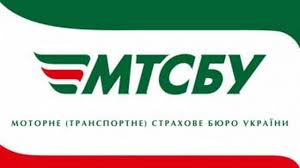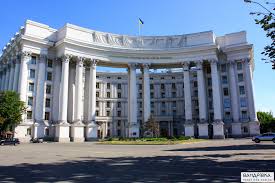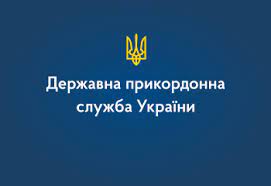
Insurance companies-members of the Motor (Transport) Insurance Bureau of Ukraine (MTSBU) in January-March 2024 concluded 1.7 million contracts of compulsory civil liability insurance of owners of land vehicles (CMTPL), which is 5.02% more than in the same period of 2023.
According to data released on the MTSBU website, 74% or 1.2 million contracts were concluded electronically, 20% more than in January-March last year.
Members of the Bureau for the three months of 2024 increased the collection of insurance payments under CMTPL insurance policies by 26.2% compared to the comparable period of 2023 – up to UAH 2.1 billion, including UAH 1.673 billion (+41.12%) under electronic contracts.
The amount of the average insurance premium under MTPL contracts is UAH 1,262.8 (+20.1% compared to the same period of 2023).
The total amount of accrued insurance indemnities under domestic insurance contracts has increased by 31,16% – up to UAH 1,18 billion, including UAH 237,9 million paid using “europrotocol” (+17,34%).
The Bureau also recorded an increase in the number of settled claims for insurance compensation by 17.95% – up to 36.6 thousand, including data on the use of “Europrotocol” -13,206 thousand (+3.94%).
The average amount of insurance indemnity for claims of victims in Q1 2024 is UAH 32,270 thousand, which is by 11,2% more than in the same period of 2023 (UAH 29,019 thousand).
The ITSBU is the only association of insurers in Ukraine, carrying out compulsory insurance of civil liability of owners of inland motor vehicles for damage caused to third parties. 33 insurance companies are members of the Bureau.

The number of registered unemployed people increased by 7.9% to 118.5 thousand in March, mainly due to the increase in the number of unemployed women for the fourth month in a row, including last month – by 7.6 thousand to 91.9 thousand.
According to the data of the National Bank of Ukraine (NBU), released on Friday, the number of unemployed also increased among people under 35 years old – by 2.3 thousand, up to 27.1 thousand.
It is specified that such a trend has lasted since January 2024.
As in the previous month, the largest number of unemployed citizens was recorded in the following regions: Zaporizhzhya (8.9 thousand), Kharkiv (8.6 thousand), Dnipropetrovsk (8.4 thousand), Sumy (7.3 thousand) and Poltava (6.4 thousand).
According to the central bank, the number of unemployed receiving benefits increased from 46.6 thousand to 51.2 thousand, while the number of vacancies also increased to 44.5 thousand from 41 thousand in February.
More details on macroeconomic indicators of Ukraine and the world, GDP of major countries and other economic topics were discussed in one of the video analysis of Experts club analytical center – https://youtu.be/w5fF_GYyrIc?si=Ymo-FlMFNGfLLdK-.
Subscribe to Experts club channel here: https://www.youtube.com/@ExpertsClub

Significant rains are expected on Sunday, April 21, in Kyiv, Chernihiv, Cherkasy, at night and Odessa, Mykolayiv, Kirovograd and Sumy regions, reports Ukrhydrometcenter.
In the afternoon in the eastern, Cherkasy, Poltava, Dnipropetrovsk, Kherson and Zaporizhzhya regions thunderstorms, in the south-eastern and central regions wind gusts of 15-20 m/s. In this regard, in these areas declared I level of danger, yellow.
At night on April 21-22, April 21-22 in the western regions on the surface of the soil frost 0-3 ° (I level of danger, yellow).

Ukraine has officially opened its embassy in Rwanda with the participation of Rwandan officials, ambassadors and members of the diplomatic corps, marking an important step in the development of bilateral relations between the two countries, the Foreign Ministry’s website has reported.
According to the Foreign Ministry’s press service, on April 18, Ukraine’s Special Representative for the Middle East and Africa Maxim Subh made a working visit to the city of Kigali to officially open the Ukrainian Embassy in the Republic of Rwanda as part of his tour of African countries.
The event was attended by Permanent Secretary of the Ministry of Foreign Affairs and International Cooperation of Rwanda Clementina Mukeka, ambassadors and members of the diplomatic corps accredited in Rwanda, representatives of the media and business circles of the host country.
It is noted that Subh informed the participants of the opening ceremony of the embassy about countering the ongoing armed aggression of Russia, Russian massive missile strikes on the energy and industrial infrastructure of Ukraine, as well as the efforts of the Ukrainian people and the Armed Forces of Ukraine aimed at protecting the sovereignty and territorial integrity of the state.
During his visit to Rwanda, the Special Representative met with the Rwandan Minister of Foreign Affairs and International Cooperation Vincent Biruta. The parties discussed the prospects for the development of bilateral cooperation, as well as interaction within the framework of international organizations.
“I highly appreciate Rwanda’s position on supporting the sovereignty and territorial integrity of Ukraine,” the Ukrainian diplomat emphasized.
The special representative also handed Biruti a personal message from Ukrainian Foreign Minister Dmytro Kuleba and an invitation to participate in the Global Peace Summit.
For his part, Rwandan Minister Vincent Biruta noted the heroism of the Ukrainian people, who, according to him, courageously oppose Russian aggression. The minister said that the Rwandan side was considering the possibility of participating in the Global Peace Summit in Switzerland.
Biruta also noted that the opening of the Ukrainian diplomatic mission is an important step in the development of relations between Ukraine and Rwanda, which will give a new impetus to bilateral cooperation.

Polish farmers plan to allow trucks to pass through the checkpoint “Rawa-Russkaya – Grebennoye” to enter Poland, except for those moving goods of groups 1-24 of the UKTVED (agricultural products).
As reported in the Telegram channel of the State Border Service of Ukraine on Saturday, the preliminary movement of trucks should begin at 8:00 on April 21.
Earlier it was reported that the movement of trucks at the checkpoints “Shegini-Medika” and “Krakowiec-Korczowa” on the Polish-Ukrainian border was resumed on Saturday morning after Polish farmers ended the protest action in front of them. The registration and passage of cargo vehicles across the border in the two directions is carried out as usual.

German MC-Bauchemie intends to invest EUR 1.5 mln in the expansion of dry construction mixtures production in Berezan (Kiev region), MC-Bauchemie Ukraine director Artem Priymachenko told Interfax-Ukraine agency.
“We intend to build a new line for special construction materials, such as a variety of polymer-cement mixes for structural repair of concrete, toppings for industrial floors, waterproofing materials, highly functional adhesives for tiles. The approximate volume of investments is EUR 1.5 mln,” he said.
According to Priymachenko, the investments will be made at the expense of MC-Bauchemie’s own funds. The discussion of war risk insurance is underway now.
“We are now in the procedure of obtaining a guarantee from international organizations for military risks. We are considering options – the German government or MIGA from the World Bank,” he said.
According to the company’s plans, the new line in Berezan could be launched at the end of 2025.
Founded in 1961, MC-Bauchemie Group is one of the leading international producers of construction chemicals and technologies. With more than 2,500 employees, it is represented in more than 50 countries.
According to the data of opendatabot, LLC “MC-Bauchemie” (33482370) was founded in 2005, authorized capital 333,8 thousand UAH. Revenue in 2023 356 million 836 thousand UAH, which is 2.6 times higher than the results of 2022 and 9% higher than pre-war 2021. Net profit for 2023 UAH 55 million 618 thousand, in 2022 there was a net loss of UAH 18 million 625 thousand.
construction mixtures, INVESTMENTS, KYIV REGION, MC-Bauchemie